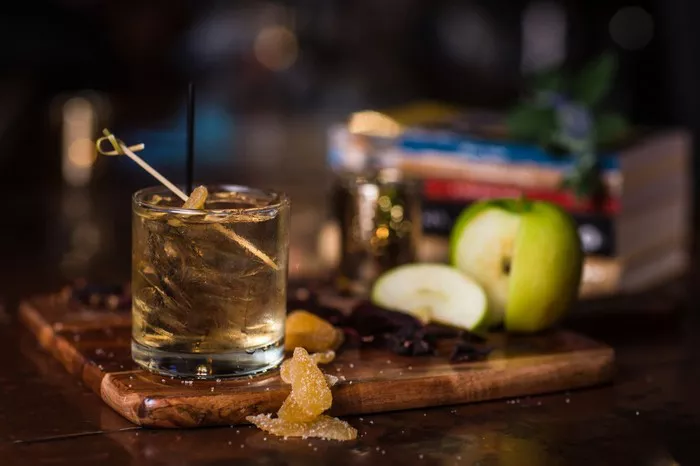The Mule cocktail, often simply referred to as a “Mule,” has emerged as a celebrated icon in the world of mixology. Whether you’re a seasoned cocktail connoisseur or a newcomer to the craft, understanding what a Mule cocktail is and its intriguing history can elevate your appreciation of this refreshing libation. In this article, we will explore the origins, key ingredients, variations, and the art of crafting a Mule cocktail that tantalizes the taste buds.
1. The Essence of a Mule Cocktail:
A Mule cocktail, in its essence, is a delightful fusion of three primary ingredients:
Spirit: The heart of a Mule cocktail is a base spirit, typically vodka, bourbon, rye whiskey, or even tequila. The choice of spirit imparts a distinct character to the cocktail.
Ginger Beer: One of the defining features of a Mule is the effervescent and spicy kick of ginger beer. It not only adds a zesty element but also makes the Mule incredibly refreshing.
Citrus: A splash of citrus, usually lime juice, is the final touch that balances the flavors, providing a tangy and citrusy dimension to the cocktail.
2. The Birth of the Moscow Mule:
The Mule cocktail has its roots in the creation of the Moscow Mule, a cocktail legend that was born in the early 1940s. The story goes that a vodka distributor and a ginger beer producer, looking to promote their products, joined forces to create this iconic cocktail. The Moscow Mule traditionally features vodka as its base spirit and is typically served in a copper mug, an iconic presentation that adds to its allure.
3. Variations Galore:
While the Moscow Mule remains the most well-known Mule cocktail, the Mule family has expanded to include a diverse array of variations, each with its unique twist:
Kentucky Mule: Replacing vodka with bourbon, the Kentucky Mule offers a warm and whiskey-forward alternative.
Mexican Mule: Opting for tequila as the base spirit, the Mexican Mule infuses a south-of-the-border flair into the classic Mule.
Irish Mule: Utilizing Irish whiskey, this version boasts a smoother and slightly sweet Mule experience.
4. Crafting the Perfect Mule:
Creating a Mule cocktail is a straightforward yet delightful process. Follow these steps to craft your Mule masterpiece:
Fill a copper mug (or a suitable glass) with ice.
Pour 2 ounces (60 ml) of your chosen spirit over the ice.
Squeeze in the juice of half a lime.
Top off with 4-6 ounces (120-180 ml) of ginger beer.
Give it a gentle stir with a bar spoon to combine the ingredients.
Garnish with a lime wedge or wheel.
Conclusion:
In the world of cocktails, the Mule stands tall as a symbol of refreshment, versatility, and simplicity. From the classic Moscow Mule to its intriguing variations, the Mule cocktail has captured the hearts of mixologists and cocktail enthusiasts worldwide. Now that you’ve uncovered the essence of the Mule, you’re ready to embark on a journey of tasting and creating this iconic libation. Whether you prefer it with vodka, bourbon, or tequila, the Mule cocktail remains a timeless favorite that quenches the thirst for something both classic and refreshing.
FAQs about Mule Cocktails:
1. What is the origin of the Mule cocktail?
The Mule cocktail originated in the 1940s, with the Moscow Mule being the most famous variation. It is said to have been created as a promotional collaboration between a vodka distributor and a ginger beer producer.
2. Can you make a Mule cocktail with different types of spirits?
Yes, the Mule cocktail is incredibly versatile. You can use a variety of base spirits, including vodka, bourbon, rye whiskey, and tequila, to create different Mule variations.
3. Why is a copper mug commonly used for serving Mule cocktails?
A copper mug is often used for serving Mule cocktails because it helps keep the drink incredibly cold. The copper conducts the cold temperature from the ice, providing a refreshing and frosty drinking experience.
4. What’s the difference between a Moscow Mule and other Mule variations?
The Moscow Mule is the original Mule cocktail, made with vodka. Other variations, like the Kentucky Mule (bourbon) and Mexican Mule (tequila), substitute the base spirit, giving each Mule its unique flavor profile.
5. Are there non-alcoholic versions of Mule cocktails?
Yes, non-alcoholic or “virgin” versions of Mule cocktails can be made by omitting the alcoholic base spirit and using ginger beer, lime juice, and ice. These are great options for those who prefer non-alcoholic beverages.
6. What type of ginger beer works best for Mule cocktails?
For a Mule cocktail, it’s recommended to use a high-quality, spicy ginger beer. Brands like Fever-Tree and Gosling’s are popular choices, as they provide a robust ginger flavor that complements the other ingredients.
7. Can you customize the sweetness and spiciness of a Mule cocktail?
Yes, you can adjust the sweetness and spiciness of a Mule cocktail by choosing the type of ginger beer and the amount of lime juice you add. Experimenting with different brands and ratios allows you to tailor the cocktail to your taste.
8. What’s the significance of the lime garnish in a Mule cocktail?
The lime garnish in a Mule cocktail serves two purposes. Firstly, it adds a burst of citrusy aroma and flavor to balance the spiciness of the ginger beer. Secondly, it enhances the drink’s visual appeal.
9. Are there any creative Mule cocktail variations with unique ingredients?
Yes, creative mixologists often experiment with Mule cocktail variations by adding unique ingredients like flavored syrups, fruit purees, or herbs to create innovative and distinctive flavors.
10. Can you enjoy Mule cocktails year-round, or are they more suited to a particular season?
Mule cocktails are versatile and can be enjoyed year-round. The refreshing and zesty nature of Mule cocktails makes them a great choice for summer, but they can also be cozy and warming during colder months, especially when made with bourbon or whiskey.


